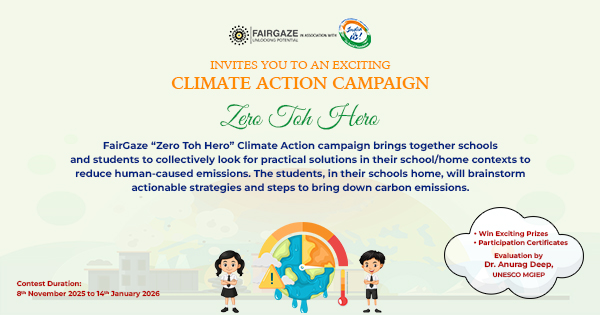
Talk About Climate Change & Its Effect In The Polar & Tropical Regions, As Well As At The Equator
Editorials News | Jul-25-2023
The polar, tropical, and equatorial areas are most affected by climate change, which is a worldwide process that impacts every portion of the planet. These regions are distinguished by particular climates, sensitive ecosystems, and weak communities that are disproportionately impacted by the effects of global warming.
This article examines the particular implications of climate change in certain areas and emphasizes the immediate need for all-encompassing action to lessen those effects.
1. Arctic & Antarctica Are Polar Regions:
The consequences of climate change in the Polar regions are some of the fastest and clearest. Global sea levels are increasing as a result of the massive melting of polar ice caps and glaciers brought on by rising temperatures. This hurts the delicate balance of marine ecosystems in addition to posing a serious threat to low-lying coastal areas.
Sea ice loss and altered animal migratory patterns are causing disturbances to traditional ways of life for Arctic populations, particularly indigenous peoples. The existence of animals like polar bears, walruses, and seals is further threatened by habitat loss. The breeding habitats of several penguin species and marine life in the Antarctic are impacted by melting ice shelves and rising waters.
2. Tropical Areas:
Due to climate change, extreme weather events are becoming more common and severe in tropical regions close to the equator. The strength of hurricanes, cyclones, and typhoons has grown, with disastrous effects on infrastructure, agriculture, and community life. These catastrophic weather events frequently have an outsized impact on weaker communities that are poor and have little access to resources and infrastructure.
Tropical rainforests, like those in the Amazon and Congo Basin, are essential for storing carbon dioxide and controlling the climate on a worldwide scale. However, logging and other human-caused land conversion activities that cause deforestation limit the forest's capacity to absorb carbon dioxide. This exacerbates global warming by increasing greenhouse gas emissions.
3. Equitable Areas:
The equator is seeing the effects of climate change in the form of rising temperatures and shifting rainfall patterns. Water shortages and decreased agricultural output are frequent outcomes of extended droughts and more extreme heatwaves. Conflicts over resources, displacement, and food poverty might result from these difficulties.
Millions of people downstream are at risk because of the melting glaciers on tropical mountains like the Andes and Kilimanjaro. Changes in precipitation patterns affect both terrestrial and marine ecosystems, which in turn influence biodiversity.
In conclusion,The polar, tropical, and equatorial regions of the earth are seriously and intricately threatened by climate change. Extreme weather events, rising sea levels, and altered precipitation patterns are just a few of the effects of global warming that have a significant impact on these regions' ecosystems, populations, and economies.
Global action is needed right away to slow down climate change and prepare for its implications. The international community must cooperate to cut greenhouse gas emissions, save and restore vital ecosystems, and make investments in sustainable practices and climate-resilient infrastructure.
Additionally, it is crucial to assist and empower the most vulnerable populations in these areas to increase resilience and meet the difficulties brought on by climate change. We can fight to create a future that is more sustainable and just for everyone if we acknowledge the special vulnerability of polar, tropical, and equatorial regions.
Anand School of Excellence
Related News
-
Nepal's Hydropower Projects
-
Improving Education in Nepal
-
Women's Empowerment in Nepal
-
Nepal's Agricultural Development
-
Advances in Russian Neuroscience: New Hope for Patients
-
Russian Scientists Discover New Gene Therapy Techniques
-
Russia's Biomedical Industry: Growing Innovations
-
History of Indigo Plantation in Colonial India
-
Diwali: Festival Of Lights Not Crackers
-
Impact of Social Media on the Culture
Most popular news
- The Law Of Equivalent Exchange
- Essay On Issues And Challenges Of Rural Development In India
- Srinivasa Ramanujan And His Inventions
- The Youth Is The Hope Of Our Future!
- Poverty In India: Facts, Causes, Effects And Solutions
- Top 20 Outdoor Games In India
- Festivals Of India: Unity In Diversity
- Role Of Women In Society
- The Impact Of Peer Pressure On Students' Academic Performance
- Books As Companion




